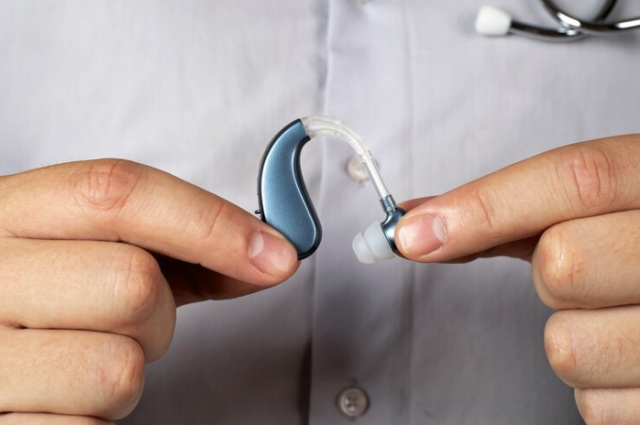Hearing loss affects millions of Australians, impacting their communication, social interactions, and overall quality of life. However, with advancements in technology and healthcare, the landscape of hearing aids in Australia has undergone significant transformations, offering hope and solutions to those experiencing hearing difficulties.
In this article, we delve into the realm of hearing aids in Australia, exploring the latest innovations, accessibility, challenges, and the transformative impact these devices have on individuals and communities.
The State of Hearing Loss in Australia
Australia grapples with a pervasive issue of hearing loss, affecting millions across diverse demographics. Despite this, innovative solutions such as Freedom Hearing’s offerings provide hope.
Through accessible and advanced hearing aids, they aim to empower individuals to overcome challenges and reclaim the joy of sound. Explore Australia hearing aids with Freedom Hearing
Understanding the Scope
Hearing loss is a prevalent health issue in Australia, affecting people of all ages and backgrounds.
According to the Australian Network on Disability, approximately 3.6 million Australians live with hearing loss, with projections indicating a steady increase in prevalence due to aging populations and environmental factors.
Impact on Individuals and Society
The consequences of untreated hearing loss extend beyond difficulty in hearing. Individuals may experience social isolation, diminished cognitive function, and reduced employment opportunities.
Moreover, the economic burden on society is substantial, with estimates suggesting billions of dollars in healthcare costs and lost productivity annually.
The Evolution of Hearing Aid Technology
From Analog to Digital
Historically, hearing aids were bulky, analog devices with limited functionality. However, advancements in digital technology have revolutionized the field, offering sleek, customizable devices with sophisticated features.
Digital hearing aids can automatically adjust settings based on environmental cues, filter out background noise, and connect wirelessly to other devices for enhanced functionality.
Wireless Connectivity and Smartphone Integration
Modern hearing aids in Australia often feature wireless connectivity, allowing users to stream audio directly from smartphones, televisions, and other compatible devices.
This integration enhances convenience and accessibility, enabling seamless communication and entertainment experiences.
Invisible and Discreet Designs
Gone are the days of conspicuous hearing aids. Today, manufacturers offer discreet designs that sit comfortably inside the ear canal, rendering them virtually invisible to others.
These discreet options cater to individuals who prioritize aesthetics and wish to maintain a natural appearance.
Accessibility and Affordability
Government Support and Subsidies
Recognizing the importance of hearing healthcare, the Australian government provides various forms of support to facilitate access to hearing aids.
The Hearing Services Program (HSP) offers eligible individuals subsidies for hearing assessments and devices, ensuring affordability and accessibility for those in need.
Private Health Insurance
Many private health insurance plans in Australia include coverage for hearing aids, providing additional avenues for individuals to access these essential devices.
Depending on the level of coverage, policyholders may receive partial or full reimbursement for hearing aid expenses, reducing financial barriers to treatment.
Challenges and Opportunities
Stigma and Awareness
Despite the prevalence of hearing loss, stigma remains a significant barrier to seeking treatment. Misconceptions about hearing aids, such as their perceived ineffectiveness or association with aging, contribute to delayed intervention and underutilization of available resources.
Efforts to raise awareness and challenge societal perceptions are crucial in promoting early intervention and acceptance of hearing aids.
Technological Barriers
While advancements in hearing aid technology have improved functionality and user experience, challenges persist, particularly for older adults and technologically inexperienced individuals.
Addressing usability issues, providing comprehensive training and support, and developing user-friendly interfaces are essential steps in ensuring that all Australians can benefit from the latest innovations in hearing aid technology.
Challenges and Opportunities
Stigma and Awareness
Despite the prevalence of hearing loss, stigma remains a significant barrier to seeking treatment. Misconceptions about hearing aids, such as their perceived ineffectiveness or association with aging, contribute to delayed intervention and underutilization of available resources.
Efforts to raise awareness and challenge societal perceptions are crucial in promoting early intervention and acceptance of hearing aids.
Technological Barriers
While advancements in hearing aid technology have improved functionality and user experience, challenges persist, particularly for older adults and technologically inexperienced individuals.
Addressing usability issues, providing comprehensive training and support, and developing user-friendly interfaces are essential steps in ensuring that all Australians can benefit from the latest innovations in hearing aid technology.
Access in Rural and Remote Areas
Access to hearing healthcare services, including hearing aids, can be limited in rural and remote areas of Australia. Factors such as geographic isolation, shortage of healthcare professionals, and lack of infrastructure pose significant challenges for individuals living in these regions.
Initiatives to expand telehealth services, mobile clinics, and community outreach programs are essential in bridging the gap and ensuring equitable access to hearing aids for all Australians, regardless of their location.
Conclusion
In conclusion, the landscape of hearing aids in Australia has undergone remarkable advancements, offering hope and improved quality of life to individuals living with hearing loss. From state-of-the-art digital devices to government subsidies and private insurance coverage, Australians have access to a range of options to address their hearing needs.
However, challenges such as stigma and technological barriers persist, highlighting the importance of continued advocacy, education, and innovation in the field of hearing healthcare. By working together to overcome these challenges, we can ensure that all Australians have the opportunity to hear, connect, and thrive.







